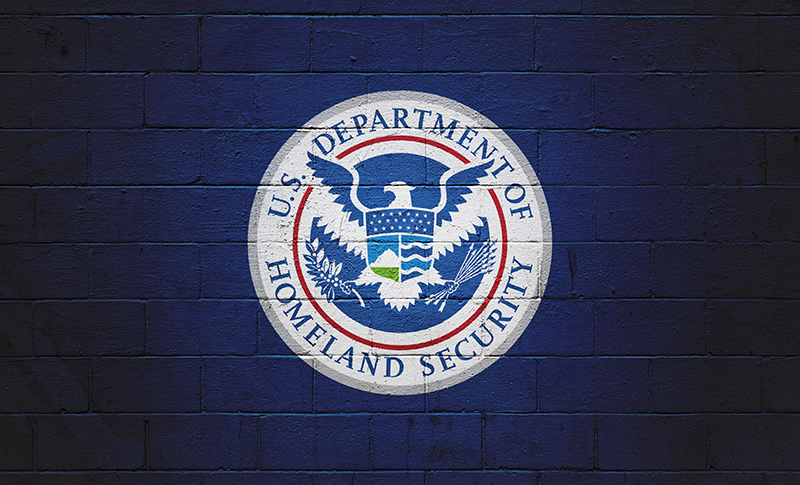The August Column that Foretold Biden’s Border Policy
While reviewing recent immigration stories, I clicked on a column captioned “The Biden border crisis, explained”. It described how the Biden administration had ditched deterrence of illegal migrants at the Southwest border in favor of a policy to facilitate asylum applications by every illegal migrant who makes it to this country — two points I have underscored of late. Oddly, by my estimation, it failed to reference recent administration statements confirming this policy shift, but I soon realized there was a reason for this omission: It was written nearly a year ago and foretold the president’s policy.
The Piece. The author of that piece was Conn Carroll, and his article lays out the historic decline of deterrence as a border strategy, beginning with provisions in the Trafficking Victims Protection and Reauthorization Act of 2008 (TVPRA) relating to the treatment of unaccompanied alien children (UACs).
Section 235 of the TVPRA directs DHS to transfer all UACs it encounters from “non-contiguous” countries (i.e., all countries other than Canada and Mexico) over to the Department of Health and Human Services in 72 hours, nearly all for placement with “sponsors” in the United States.
Those rules apply regardless of whether the UACs in question haven’t been trafficked and don’t fear persecution if returned home — even though section 235 of the TVPRA is captioned “Efforts to Combat the Trafficking of Children”.
Carroll notes that researchers at the University of Texas at El Paso (UTEP) realized in the fall of 2013 that the number of UACs who had been apprehended after crossing the Southwest border illegally had “more than doubled over the previous three years, rising from just over 16,000 in 2011 to more than 38,000 in 2013”, and set out to determine why.
So, they interviewed CBP and ICE officials who were working with those UACs, who “agreed that the lack of deterrence for crossing the US-Mexico border had impacted the rate at which they” were apprehending the UACs.
Specifically, those officers stated that they “were certain that” UACs were “aware of the relative lack of consequences they” would face after apprehension. Further, the researchers explained:
UTEP was informed that smugglers of family members of UACs understand that once a UAC is apprehended for illegal entry into the United States, the individual will be re-united with a U.S. based family member pending the disposition of the immigration hearing. This process appears to be exploited by illegal alien smugglers and family members in the United States who wish to reunite with separated children.
In other words, illegal entrants respond to consequences, and when there are no policies to impose such consequences, there is no deterrence.
UTEP warned DHS that unless the UAC policies changed, their numbers would further increase, leaving DHS without the resources to deal with the problem. As Carroll made clear, however: “The federal government ignored the report, whose predictions of course came true” when Border Patrol agents caught more than 68,540 UACs at the Southwest border in FY 2014 and struggled for processing space.
The effort to amend section 235 of the TVPRA did, however, find an unlikely champion in then-President Barack Obama.
Obama wrote to congressional leaders in June 2014, updating them on his administration’s “efforts to address the urgent humanitarian situation in the Río Grande Valley areas of our Nation’s Southwest border”, and requesting that “Congress support the new tools and resources we need to implement a unified, comprehensive Federal Government response”.
Obama asked Congress in particular to provide DHS with “additional authority to exercise discretion in processing the return and removal of unaccompanied minor children from non-contiguous countries like Guatemala, Honduras, and El Salvador” — in other words, to fix the exception for UACs who weren’t from Mexico or Canada in section 235 of the TVPRA.
That effort went nowhere. Consequently, CBP encountered a record number of UACs from non-contiguous countries at the Southwest border in FY 2021 (more than 121,225), a record it is on track to break in FY 2022 with nearly 94,000 such encounters at the U.S.-Mexico line through the end of June.
Unlike his old boss, Biden does not seem to think that’s a problem, because he has ignored a request from GOP congressional leadership for bipartisan legislation to close this loophole in section 235 of the TVPRA.
In fact, as Carroll explains, the problem has only gotten worse since that report was issued. In August 2015, a federal district court judge overseeing the 1997 Flores settlement agreement (which sets the terms of detention and release for migrant children) held that the agreement required DHS to release accompanied children as well, and their parents, within 20 days.
While the Ninth Circuit later amended that order to direct the release of just the children, DHS has — with limited exceptions — released the parents, too, to avoid “family separation”. As a direct result, in FY 2019, more than half of the 851,500 aliens apprehended by Border Patrol at the Southwest border were adults travelling with children in “family units” (FMUs).
The Trump administration attempted to deter aliens from bringing kids with them on their illegal trek to the United States (which an April 2019 bipartisan federal panel report found resulted in trauma to the children and danger for all involved) by returning illegal migrants back across the border to await their asylum hearings (“Remain in Mexico”), and by implementing regulations to replace the Flores settlement agreement that would allow DHS to detain aliens in FMUs.
Immigrant advocates successfully sued to block those regulations from taking effect, however, and the Biden administration has fought to end Remain in Mexico, over objections from plaintiff states who have argued — as DHS itself found in October 2019 — that the program was “an indispensable tool in addressing the ongoing crisis at the southern border and restoring integrity to the immigration system”, particularly as related to alien families.
Carroll noted that the Obama and Trump administrations had also worked with the (often reluctant) government of Mexico to slow the flow of non-Mexican migrants through our neighbor to the south. Such efforts have been undermined, however, by Biden himself, as Carroll explained:
Asked by Univision’s Jorge Ramos, “Why should Latinos trust you?” Biden responded that “if you want to flee and you are fleeing oppression, you should come.”
And once migrants claiming asylum make it into the U.S., Biden made it clear they had nothing to fear from Immigration and Customs Enforcement as long as he was president.
Asked by Telemundo’s Jose Diaz-Balart, “Should someone who is here without documents, and that is his only offense, should that person be deported?” Biden responded, “That person should not be the focus of deportation. We should fundamentally change the way we deal with things.”
A Dismal Update. Biden has definitely “changed things” at the Southwest border, with his DHS Secretary, Alejandro Mayorkas, going so far as publicly stating on the May 1 edition of “Fox News Sunday” that deterring illegal entrants is no longer the administration’s border policy — facilitating the asylum claims of migrants is.
Anchor Bret Baier asked the secretary whether it is “the objective of the Biden administration to … sharply reduce the total number of illegal immigrants coming across the southern border?”
Mayorkas responded: “It is the objective of the Biden administration to make sure that we have safe, orderly, and legal pathways for individuals to be able to access our legal system.” That message may have been largely lost on the American people, but it was clear to the migrants and smugglers as Border Patrol set an all-time monthly record for apprehensions (224,220) at the Southwest border in May.
Again, the only way to deter illegal migrants is to ensure that they will face consequences for violating U.S. immigration laws. Aliens enter the United States illegally to live and work in the United States, and if government policies ensure they will be able to do so, they will keep coming.
There are three consequences that will frustrate that intent: detention in the United States pending removal proceedings, return across the border to await their hearings, and/or prosecution for illegal entry.
My former Democratic colleague on the House Judiciary Committee, Nolan Rappaport, recently examined DHS’s Fiscal Year 2020 Enforcement Lifecycle Report, which delineates the enforcement outcomes (repatriation, relief, or findings of non-removability) for aliens stopped at the Southwest border between FY 2014 and FY 2019.
As Rappaport explained, “The report indicates that — to a great extent — enforcement outcomes depend on detention practices”, i.e., the immigration laws only work if aliens charged with removability are detained throughout the process — which is why Congress requires DHS to detain illegal migrants.
Despite this fact, alien detentions have plummeted throughout the Biden administration, ICE detention sits empty (at a cost of more than $41.5 million per month), and the president is asking Congress to cut detention funding in the FY 2023 budget — despite the fact that record numbers of migrants are surging across the Southwest border.
Prosecutions of illegal entrants have also dropped under the Biden administration, and as noted the president is fighting in federal court (thus far successfully) to end Remain in Mexico — all while the Biden administration is issuing plans to rubberstamp migrants’ asylum applications and expedite their work authorizations. There are no consequences for illegal entry, and the migrants know it.
Carroll noted that Trump-era CDC orders issued under Title 42 of the U.S. Code, which direct DHS to expel illegal migrants, have provided some relief for agents at the border, but the administration is currently appealing a district court order that requires it to keep Title 42 in place, and has been expelling fewer migrants under the CDC directive.
DHS Is Required to Deter Illegal Entrants. Perhaps the Biden administration believes that Congress has never expressly directed it to deter illegal migrants, but if so, it’s wrong.
Not only does the Immigration and Nationality Act require DHS to detain illegal entrants, but the Secure Fence Act of 2006 (which then-Sen. Biden (D-Del.) voted for) requires Mayorkas to gain “operational control” — defined as “the prevention of all unlawful entries into the United States, including entries by terrorists, [and] other unlawful aliens” — at the Southwest border.
DHS has released more than 1.1 million illegal migrants it stopped at the U.S.-Mexico line into the United States under the Biden administration — not counting a half-million-plus “got-aways” who entered illegally and successfully evaded agents there this fiscal year. That is more than 1.6 million times that Mayorkas’ DHS violated the Secure Fence Act.
Nothing is going to change unless the electoral consequences of the border catastrophe become too dire for Biden and his fellow Democrats to ignore. The president’s immigration policies are already wildly unpopular, but whether that converts into votes for the GOP in November is yet to be seen.
One wild card is whether the administration is allowed to end Title 42. When and if it does, DHS estimates that up to 18,000 aliens per day will enter illegally over the Southwest border (by comparison, CBP averaged “just” over 6,900 daily encounters in June).
The threat of such a post-Title 42 surge heightened voters’ concerns about illegal immigration in late April; the real thing would likely tank Biden’s already anemic approval ratings. If the administration is allowed to end Title 42 by the fall, the resulting human border tsunami would likely spell a Democratic congressional wipe-out.
Despite the bleak state of the Southwest border, the Biden administration is unlikely to voluntarily change course and do what every one of its predecessors did — implement a policy to deter illegal migrants. As Conn Carroll explained in his article last August, this anti-deterrence strategy has been a long time coming — and subsequent history has shown that the implications are just getting worse.

.png)




